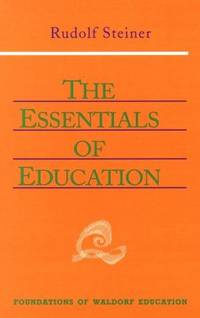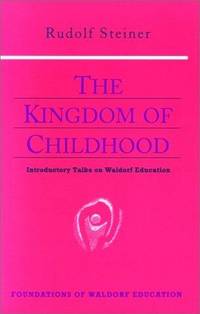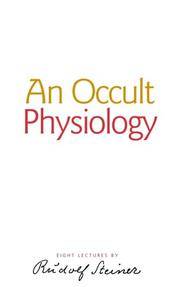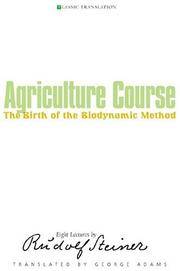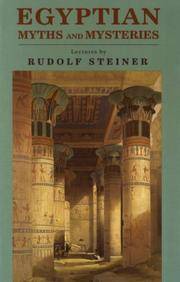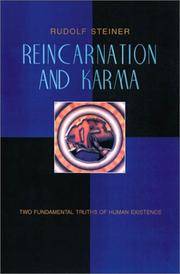Rudolf Steiner (1861 – 1925)
Rudolf Steiner (February 27, 1861, Murakiraly, Hungary (today Donji Kraljevec, Medjimurje county, Croatia- March 30, 1925) was an Austrian philosopher, literary scholar, architect, playwright, educator, and social thinker, who is best known as the founder of anthroposophy and its practical applications, including Waldorf education, biodynamic Agriculture, the Camphill movement for disabled adults and children, anthroposophical medicine, the new art of eurythmy and other new impulses in art, architecture, and others.
Steiner characterized history as essentially shaped by changes formed through a progressive development of human consciousness. The activity of individualised human thinking was seen as a relatively recent advance which led to the dramatic developments of the Renaissance and the Industrial Revolution. In his epistemological works, he advocated the Goethean view that thinking itself is a perceptive instrument for ideas, just as the eye is a perceptive instrument for light.
Steiner's father was a huntsman in the service of Count Hoyos in Geras, and later became a telegraph operator and stationmaster on the Southern Austrian Railway. When Rudolf was born, his father was stationed in Murakiraly in the Murakoz region, then part of Hungary. When he was two years old, the family moved into Burgenland, Austria, in the foothills of the eastern Alps.
Steiner displayed a keen and early interest in mathematics and philosophy. From 1879-1883 he attended the Technische Hochschule (Technical University) in Vienna, where he concentrated on mathematics, physics, and chemistry. In 1891, with his thesis Truth and Knowledge, he earned a doctorate in philosophy at the University of Rostock in Germany.
In 1888, Steiner was invited by Grand Duchess Sophie of Saxony to edit the complete edition of Goethe's scientific works in Weimar, where he worked until 1896. During this time he also collaborated in a complete edition of Arthur Schopenhauer's work.
He wrote his seminal philosophical work, The Philosophy of Freedom) in 1894, which advocated the possibility that humans can become spiritually free beings through the conscious activity of thinking.
In 1896, Friedrich Nietzsche's sister, Forster-Nietzsche, asked Steiner to set the Nietzsche archive in Naumburg in order. Her brother by that time was no longer compos mentis. Forster-Nietzsche introduced Steiner into the presence of the catatonic philosopher and Steiner, deeply moved, subsequently wrote the book Wahrheit und Wissenschaft).
In 1897, Steiner moved to Berlin to edit the Magazin für Literatur.
A turning point came when, in the August 28, 1899 issue of this magazine, he published an article entitled "The Green Snake and the Beautiful Lily. This article led to an invitation by the Count and Countess Brockdorff to speak to a gathering of theosophists on the subject of Nietzsche. Steiner continued speaking regularly to the members of the Theosophical Society, eventually becoming the head of its German section. It was also within this society that Steiner met Marie von Sievers, who would to become his second wife.
Beginning around this time, c. 1900, till his death in 1925, Steiner articulated an ongoing stream of "experiences of the spiritual world"- experiences he said had touched him from an early age on. Steiner sought to apply all his training in mathematics, science, and philosophy in order to produce rigorous, intersubjectively testable presentations of those experiences. He also sought to bring a consciousness of spiritual life and non-physical beings into many practical domains-medicine, education, science, architecture, special education, social reform, Agriculture, drama, among others. Steiner held that non-physical beings were in everything, and that through freely chosen ethical disciplines and meditative training, anyone could develop the ability to experience such beings, and thus be strengthened for creative and loving work in the world.
Steiner sought to be phenomenological. Like Edmund Husserl and Jose Ortega y Gasset, but preceding them, Steiner was intimately familiar with the philosophical work of Franz Brentano and Wilhelm Dilthey, both of whom were central precursors of the phenomenological movement in European philosophy. Steiner was also deeply influenced by Goethe's phenomenological approach to science.
Unlike the theosophists, Steiner encouraged the development of artistic efforts within the Society- and this was poorly received. Steiner also strongly objected when the leaders of the Theosophical Society declared that Krishnamurti was the reincarnation of Christ (Krishnamurti himself later repudiated the attempt to make him into a reincarnated messiah, shocking the other Theosophical leaders). Steiner quickly denied Krishnamurti was Christ, and held that Christ's earthly incarnation was a unique event. Steiner held that what trained spiritual vision could discover about most of the rest of humanity-namely that the human being goes through a series of repeated earth lives-did not apply to Christ. These and other conflicts eventually led Steiner and most of the German branch of theosophists to separate from the main body of theosophists, and found the Anthroposophical Society in 1912.
The society remained active, and after years of extensive touring and lecturing, the organization needed a home for their activities. In 1913, construction began on the first Goetheanum building, in Dornach, Switzerland, designed by Steiner himself. It was built entirely by the work of volunteers who offered their skills of craftsmanship and trade. Once World War I started in 1914, the Goetheanum volunteers could hear the sound of cannon fire beyond the Swiss border, but despite the war, people from all over Europe worked peaceably side by side on the building's construction. By 1919, the world premiere of a complete production of Goethe's Faust had been produced there- the same year as the founding of the first Waldorf school in Stuttgart.
The Goetheanum developed as a cultural centre which included activities in mathematics, medicine, biodynamic agriculture, and schools of painting, sculpture, speech and drama, and eurythmy, a new movement art form Steiner developed in conjunction with Marie Steiner. On New Year's Eve, 1922, the first Goetheanum building was burned down by arsonists. Unwavering, Steiner began work on a second Goetheanum building- still under construction when he died in 1925.
During the Christmas conference in 1923, he founded the School of Spiritual Science. At this time, Steiner said that, while the foundation stone for the first Goetheanum had been laid in the earth, he wished to lay the new foundation stone in the hearts of those gathered. The distinction makes clear that the first Goetheanum was a building, a "physical" architecture embodying the spirit, hence it was known as the house of the word, while the new impulse consists of the spiritual architecture of those human beings active in it. This School of Spiritual Science has become increasingly active since Steiner's day, and is structured like a university. As such, it has various sections or faculties. Within the society, it is seen as a centre of activity in education, agriculture, art, natural science, medicine, literature, philosophy, and economics.
Waldorf education
As a young man, Steiner already supported the independence of educational institutions from governmental control. In 1907, he wrote a long essay, titled Education in the Light of Spiritual Science, in which he described the major phases of child development and suggested that these would be the basis of a healthy approach to education.
In 1919, Emil Molt, on behalf of workers of the Waldorf-Astoria cigarette factory in Stuttgart, invited him to lecture on the topic of education. This, and subsequent lectures, formed the basis for the Waldorf Education movement, known in some countries as Steiner Education- including, perhaps, the largest independent schooling system in the world. As of 2004, there are some 870 schools worldwide, including about 170 in the United States, Canada, and Mexico.
Somewhat independently of the Waldorf schools, a separate school for Spiritual Science was founded at the Goetheanum during Christmas, 1923. Within the Anthroposophical Society, it is seen as a centre of research in education, agriculture, art, natural science, medicine, and economics. This school has become increasingly active since Steiner's day.
Activism and the threefold nature of social life
For a period after World War I, Steiner was extremely active and well-known in Germany in part because in many places he gave lectures on social questions. A petition expressing his basic social ideas (signed by Herman Hesse, among others) was very widely circulated. His main book on social questions, Toward Social Renewal) sold tens of thousands of copies. Today around the world there are a number of innovative banks, companies, charitable institutions, and schools for developing new cooperative forms of business, all working partly out of Steiner's social ideas. One example is The Rudolf Steiner Foundation (RSF), incorporated in 1984, and as of 2004 with estmated assets of $70 million. RSF provides "charitable innovative financial services". According to the independent organizations Co-op America and the Social Investment Forum Foundation, RSF is "one of the top 10 best organizations exemplifying the building of economic opportunity and hope for individuals through community investing."
Outlook on social history
In Steiner's various writings and lectures he held that there were three main spheres of power comprising human society: the cultural, the economic, and the political. In ancient times, those who had political power were also generally those with the greatest cultural/religious power and the greatest economic power. Culture, state, and economy were fused (for example in ancient Egypt). With the emergence of classical Greece and Rome, the three spheres began to become more autonomous. This autonomy went on increasing over the centuries, and with the slow rise of egalitarianism and individualism, the failure to adequately separate economics, politics, and culture was felt increasingly as a source of injustice.
The three kinds of social separations Steiner wanted strengthened
1) Increased separation between the State and cultural life
Examples: The state should not be able to control culture; i.e., how people think, learn, or worship. A particular religion or ideology should not control the levers of the State. Steiner held that pluralism and freedom were the ideal for education and cultural life.
2) Increased separation between the economy and cultural life
Examples: The fact that churches, temples and mosques do not make the ability to enter and participate dependent on the ability to pay, and that libraries and museums are open to all free of charge, is in tune with Steiner's notion of a separation between cultural and economic life. In a similar spirit, Steiner held that all families, not just rich ones, should have freedom of choice in education and access to independent, non-government schools for their children. Other examples: A corporation should not be able to control the cultural sphere by using economic power to bribe schools into accepting 'educational' programs larded with advertising, or by secretly paying scientists to produce research results favorable to the business's economic interests.
3) Increased separation between the State and the economy (associative economics)
Examples: A rich man should be prevented from buying politicians and laws. A politician shouldn't be able to parlay his political position into riches earned by doing favors for businessmen. Slavery is unjust, because it takes something political, a person's inalienable rights, and absorbs them into the economic process of buying and selling. Steiner also advocated a more humanly oriented form of capital economy precisely because unfettered capital tends to absorb the State and human rights into the economic process and transform them into mere commodities.
Education's relation to the state and the economy
Steiner's view of education's social position calls for special comment. For Steiner, separation of the cultural sphere from the political and economic spheres meant education should be available to all children regardless of the ability of families to pay for it and, on the elementary and secondary level, should be provided for by private and|or state scholarships that a family could direct to the school of its choice. Steiner was a supporter of educational freedom, but was flexible, and understood that a few legal restrictions on schools (such as health and safety laws), provided they were kept to an absolute minimum, would be necessary and justified.
"Liberty, Equality, Fraternity"
"Liberty, Equality, Fraternity" and three examples of macrosocial imbalance:
1. Theocracy,
2. Communism/state socialism,
3. Conventional capitalism
Steiner held that the French Revolution's slogan, "Liberty, Equality, Fraternity," expressed in an unconscious way the distinct needs of the three social spheres at the present time: liberty in cultural life, equality in a democratic political life, and (uncoerced) fraternity/sorority in economic life. According to Steiner, these values, each one applied to its proper social realm, would tend to keep the cultural, economic and political realms from merging unjustly, and allow these realms and their respective values to check, balance and correct one another. The result would be a society-wide separation of powers. Steiner argued that increased autonomy for the three spheres would not eliminate their mutual influence, but would cause that influence to be exerted in a more healthy and legitimate manner, because the increased separation would prevent any one of the three spheres from dominating. In the past, according to Steiner, lack of autonomy had tended to make each sphere merge in a servile or domineering way with the others.
For example, under theocracy, the cultural sphere (in the form of a religious impulse) fuses with and dominates the economic and political spheres. Under communism and state socialism, the political sphere fuses with and dominates the other two spheres. And under the typical sort of capitalist conditions, the economic sphere tends to dominate the other two spheres. Steiner points toward social conditions where domination by any one sphere is increasingly reduced, so that theocracy, communism, and the standard kind of capitalism might all be gradually transcended.
For Steiner, threefolding was not a social recipe or blueprint. It could not be "implemented" like some utopian program in a day, a decade, or even a century. It was a complex open process that began thousands of years ago and that he thought was likely to continue for thousands more.
Apart from his central book on social questions, Toward Social Renewal, there are at least two others available in English: The Social Future (revised edition 1972).
Architecture, eurythmy and free spiritual culture
Steiner developed an organic style of architecture for the design and construction of some seventeen buildings. The most significant of these are the first and second Goetheanums. These two structures, both built in Dornach, Switzerland (the first beginning in 1913), were intended to house a University for Spiritual Science.
The first Goetheanum was burned down by arsonists on New Year's eve 1922. Several surrounding buildings he designed survived the blaze (the Glasshaus, Haus Duldeck, the Transformerhaus, etc.).
Construction of the second Goetheanum building began on the same site shortly before he died in 1925. He conceived it as an organic extension and metamorphosis of the first building, inspiring and pre-dating architects such as Le Corbusier, and Eero Saarinen's Kennedy Airport (1962).
Within the Society, Steiner met his wife Marie von Sievers, with whom he developed a new artform (that also has therapeutic uses) known as Eurythmy (German: "Eurythmie")- sometimes referred to as "visible speech and visible song". Eurythmy is a work in progress; Steiner could only introduce foundational principles that continue to be developed today. The underlying idea is that there are archetypal movements or gestures that correspond to every aspect of speech- the sounds, or phonemes, the rhythms, the grammatical function, and so on- to every soul quality- laughing, despair, intimacy, etc.- and to every aspect of music - tones, intervals, rhythms, harmonies, etc.
Eurythmy performances are still held at the Goetheanum in Dornach, and at various theatres throughout the world. There are now a number of Eurythmy schools where a full four-year training is given.
As a playwright, Steiner wrote four "Mystery Dramas" between 1909 and 1913, including "The Soul's Awakening". They are still performed today.
As a sculptor, his primary work was The Representative of Humanity (1922). This enormous work carved in wood is still on display at the Goetheanum in Dornach.
Weleda, biodynamic farming, Camphill
A philosophic basis rooted in a practical sensibility yielded continuations to his work. In 1921, pharmacists and physicians gathered under Steiner's guidance to create a pharmaceutical company called Weleda, which now distributes natural medical products worldwide.
In 1924, a series of lectures to a group of farmers concerned about the destructive trend of "scientific farming" originated the practice of biodynamic agriculture, which is now practiced throughout much of Europe, North America, and Australasia. Biodynamic farming is not merely organic- in addition it works with the movement patterns of the stars and the moon, and with the non-physical beings in nature, and seeks to do testable research on how agriculture can produce the best quality food.
In 1939, based on a series of lectures Steiner gave in the 1920s on special education, physician Karl Konig founded the Camphill Movement in Scotland as a place to provide treatment for children with severe learning disabilities. There are currently more than a dozen Camphill Villages and eight Colleges providing a home for more than 1000 residents.
A few aspects of Steiner's way of thinking
According to Steiner, a real spiritual world exists out of which the material one gradually condensed, so to speak, and evolved. The spiritual world, Steiner held, can in the right circumstances be researched through direct experience, by persons practicing rigorous forms of ethical and cognitive self-discipline. Steiner described many exercises he said were suited to strengthening such self-discipline so that a practitioner's consciousness could enter the 'spiritual world'. Details about the spiritual world, he said, could on such a basis be discovered and reported, not infallibly, but with approximate accuracy.
Yet Steiner was periodically at pains to discourage taking his spiritual research reports as either accurate or inaccurate 'information' - an interpretation he considered relatively superficial. Steiner preferred for readers to enter into the process of his thinking and not cling too rigidly to the fixed results, i.e. the thoughts that crystallized out of that process. He often said there was a hidden life in thinking and advised people to attend more to the spirit or 'drift' of his words than to the letter. Otherwise readers would fall into an excessive literalism and turn his work into a doctrine, a result he said he wanted to avoid.
Those of Steiner's students alert to this distinction (e.g. Georg Khulewind, author of From Normal to Healthy) are wont to affirm Steiner's claim that remaining actively within the process, as opposed to the results of Steiner's thinking, can have the effect of awakening one gradually into forms of superconscious spiritual awareness. Steiner claims to offer a gradual experiential path from ordinary conceptual thinking into forms of thinking perceptive of living spiritual beings and mobile realities in the spiritual world. Perhaps because the spiritual path Steiner offers claims to be based, in many respects, on the gradual transformation of thinking into a wholly new activity of the whole person - an activity of thought, feeling and will seamlessly integrated into a form of spiritual awareness that eventually leaves the body and peregrinates through spiritual worlds - Steiner's teaching has attracted a number of trained scientists, physicians, and scholars in various fields.
Steiner periodically affirmed that gaining access to the unusual forms of consciousness supposedly embodied in some of his works was not a matter of believing in or having faith in whatever he chose to say about spiritual beings. It was rather that some of the thinking in some of those works, if adequately penetrated with one's own active questioning, thinking and feeling, would eventually reveal itself as a kind of spiritual music full of aesthetic tensions and relaxations and various kinds of spiritual dynamism, and this spiritual dynamism, full of complex metamorphoses of form and color, would itself eventually be perceived as the speaking and singing of real, living spiritual beings and of a real spiritual world. And this would still be only a hint of what a student could experience who learned to enter the spiritual world fully and carry out further 'research.'
Steiner also occasionally averred that this consciousness of the spirit was not so much related to the content of his statements, where he tells readers the characteristics of this or that spiritual being (or something similar) that he says he has perceived. It was not so much such content that was effective, he said, but rather something a bit deeper, within the content, that he indicated would lead one to begin to enter higher states of awareness and 'hear' or 'see' spiritual beings as one thought through his 'research reports'. The mere content was so to speak thrown up to the surface of Steiner's thinking by the style, or more precisely, by the movement and metamorphic-metaphoric process of his thinking, and it was this underlying formative process (or portions of it in some of his lectures and books), he said, that could gradually lead to a sort of superconsciousness awareness of living in spiritual worlds at least as real and persuasive as the physical world. Whereas mere content could be memorized like recipes, and then parroted mindlessly, formative process could only be experienced if one actively recreated it from within.
Some of Steiner's more philosophically inclined students argue that an obstacle to 'getting' Steiner, in the just mentioned sense, is that reading for people today is rarely a process where the dynamic birth of the conceptual out of a pre-conceptual background is felt and recreated as we read each word. When reading is creative today, that creativity tends to be confined within conceptual life, and only rarely extends to the threshold between conceptual and pre-conceptual life, the threshold where not just this or that concept, but conceptuality itself, can be experienced in the process of its creative origination, and seen at its core as fundamentally an imaginative birthing activity. Lacking awareness of this particular threshold, we also lack consciousness of the elastic poetic dynamism at the very basis not only of our most 'literal' ideas and scientific terminologies, but at the basis of the world process itself.
Again, some philosophical students of Steiner claim that one way of remaining within the process (as opposed to the results) of Steiner's thinking, would be to gradually learn through his works how to live consciously at the threshold where conceptuality comes into being. There one would supposedly no longer be confined to observing things that already are - one would begin to see realities emerging into being, and that would mean seeing to some extent into 'non-being' itself, and discovering there more than mere nothingness: a hidden life of creative non-material beings and processes in a non-material world.
Breadth of Activity
Rudolf Steiner is certainly remarkable for the breadth of his achievements. The school movement he founded has become as successful as those of Maria Montessori. Biodynamic agriculture is one of the two pillars of the modern organic farming movement, and is easily as important today as the ideas of Sir Albert Howard (recognized as the other founder of modern organic agriculture). Anthroposophic medicine has achieved as broad a range of medicinal remedies as Hahnemann's homeopathy; in addition, a broad range of supportive therapies- artistic and biographical- have arisen out of Steiner's work. The homes for the handicapped based on his work are as successful as those of L'Arche. His paintings and drawings have been exhibited in famous museums and galleries, and his pupils include Joseph Beuys and other significant modern artists. His two Goetheanum buildings are generally accepted to be amongst the masterpieces of organic architecture, and other anthroposophical architects have contributed thousands of innovative buildings to the modern scene. One of the first institutions to practice social banking was an anthroposophical bank. There are probably as many stage groups practicing his movement art, eurythmy, as those practicing Martha Graham's contemporary dance style. This list could be extended considerably.
The above comparisons are there to illustrate the point that anyone who had the success in any one of these fields that Steiner achieved would be of historical note. Since the Renaissance, there has probably been no one else who managed to found significant and successful movements in so many different fields. This is not to judge these movements themselves, merely to note the unusual breadth of his work.
Steiner's literary estate is correspondingly broad. Steiner's writings are published in about forty volumes, including essays, plays ('mystery dramas'), verse and an Autobiography. His collected lectures make up another approximately 300 volumes, and nearly every imaginable theme is covered somewhere here. (Steiner's complete works in German are searchable at the Rudolf Steiner Archive).
In addition to these written works and lectures, Steiner's drawings are separately published in a whole series of volumes. Many publications have covered his architectural legacy and his sculptural work.










